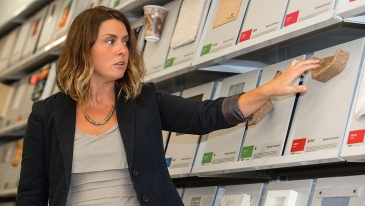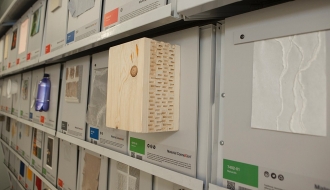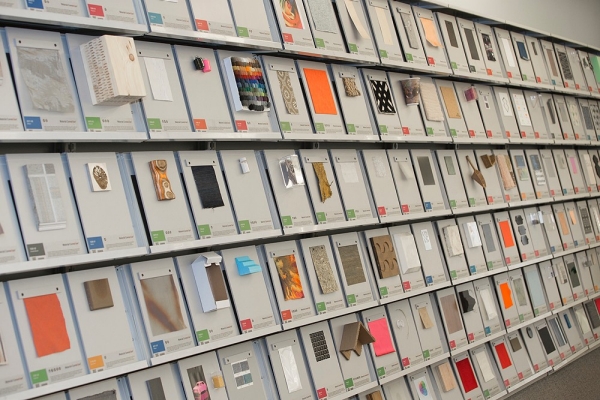Tactile materials allow students to touch inspiration
by Katie Coburn
Seaweed dye, cow stomach, milkweed fabric and stainless steel yarn sit side by side among more than 200 tactile material samples mounted on select shelves of the University of Cincinnati College of Design, Architecture, Art, and Planning Library.
Showcasing its first-ever materials library where students can gain inspiration for projects and research, this year, the DAAP library became one of the only university libraries worldwide to display a physical collection of innovative and advanced materials.
“It’s important for university libraries to focus on becoming a destination, because we are competing with the Internet for airtime with students and the world,” says Jennifer Krivickas, DAAP library director and chief curator of the materials library, which has been a work in progress since 2012. “So to create a destination collection is really an awesome way to stay relevant and to be a place where people want and need to go. You cannot get this online. It’s a tactile thing.”
Straying from traditional textiles, woods and plastics, the unique collection enables students from across the university to rethink material implementation in interprofessional projects and research. Through seeing, touching and even smelling materials on display, students can discover and learn about innovative materials firsthand and through the library’s digital database.




